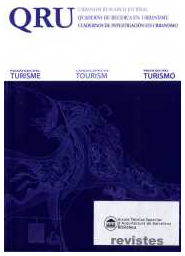¿La participación ciudadana se ha integrado al proceso de planificación turística en Cancún, México?
DOI:
https://doi.org/10.5821/qru.9593Abstract
This article will present the conceptual framework of tourism planning on the Mexican coastline that has been based on the principles of the city and regional planning system in the UK. In a forty-year lifespan, this process has evolved from being controlled by Central Government to allowing public participation. This study will focus on the Punta Cancun Plan, which is the main commercial node in the touristic zone of Cancun. This article will highlight issues related to the original methodology and possible contradictions between rigidity and rigour in the urban planning method for the most important commercial zone in Cancun. Nowadays the methodology has allowed the introduction of diverse actors to the city planning scene. Though questions have been raised about the extent to which public participation could be introduced and controlled in the planning process and what it is the best practice to introduce flexibility without risking the public interest in urban and tourist planning.Downloads
Issue
Section
License
Those authors who have publications with this journal, accept the following terms:
a. Authors will retain their copyright and guarantee the journal the right of first publication of their work, which will be simultaneously subject to the Creative Commons CC BY-NC-ND-4.0 recognition license that allows third parties to share the work provided that its author and its first publication are indicated in this journal, but they cannot be changed or used commercially.
b. Authors may adopt other non-exclusive license agreements for the distribution of the version of the published work (eg: deposit it in an institutional telematic archive or publish it in a monographic volume) provided that the initial publication in this journal is indicated.
c. Authors are allowed and recommended to disseminate their work through the Internet (e.g. in institutional telematic files or on their website) before and during the submission process, which can lead to interesting exchanges and increase citations. of the published work. (See The effect of open access).













